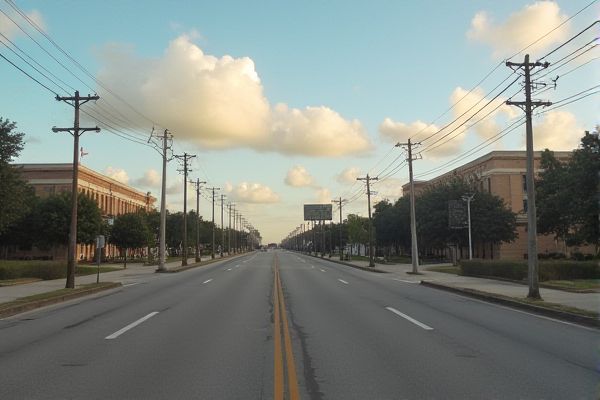
Safety and crime rates in Louisiana: Statewide crime rate statistics. Localized crime hotspots. Neighborhood watch programs. Police presence and response times. Community safety initiatives. Crime prevention resources. Safety apps and technology. Historical crime trend data. Emergency services accessibility. Personal safety tips and practices.
Statewide crime rate statistics
Louisiana has a notably high crime rate, with 33 crimes per 1,000 residents and 29 crimes per square mile, significantly exceeding the national average of 23.28 crimes per 1,000 residents. The state ranks second in the U.S. for overall crime rate, with violent crime rates nearly double the national average and a murder rate of 14.5 per 100,000 residents, the highest in the country for 35 consecutive years. For more details, you can explore what you need to know about Crime in Louisiana and its impact on different communities.
Localized crime hotspots
In Louisiana, crime hotspots are predominantly found in the southeast parts of the state, particularly in areas with high population density and retail establishments, such as Baton Rouge, where the violent crime rate is one of the highest in the nation. The southeast regions experience higher crime rates, with numerous crimes per year, while the northeast and southwest parts of the state are considered safer. To learn more about the safest areas in Louisiana, you can visit CrimeGrade, which provides comprehensive crime data and safety ratings across the state.
Neighborhood watch programs
Neighborhood Watch programs in Louisiana involve active resident participation in cooperation with law enforcement to reduce crime, educate residents on crime prevention, and encourage the reporting of suspicious activities to build safer communities.
Police presence and response times
In Louisiana, particularly in Baton Rouge, police presence and response times are enhanced through initiatives such as the Real Time Crime Center (RTCC) which uses data-driven analytics to generate precision enforcement strategies, and the use of security cameras with artificial intelligence to spot guns, reducing response times to crimes in progress. Additionally, the Louisiana State Police's Crisis Response Command and Statewide Communications Unit provide 24/7 operational support, ensuring rapid and coordinated responses to various crime and emergency situations.
Community safety initiatives
The Baton Rouge Community Street Team (BRCST), launched in 2021, is a key community-based violence intervention in Baton Rouge, focusing on mediating conflicts, connecting at-risk individuals to social services, and reducing violent crime in high-risk neighborhoods through outreach and intervention strategies. This initiative is part of a broader effort to Reimagine Public Safety and has shown promising results in preventing retaliatory violence and engaging community members.
Crime prevention resources
In Louisiana, a diverse array of crime prevention and intervention programs are available to address community safety through collaborative efforts. By employing a public health approach, resources such as those offered by the Kenner Police Department play a pivotal role. These resources include initiatives like neighborhood watch programs, the Citizen Police Academy, and Women's Self Defense classes, all aimed at boosting community engagement and awareness. Additionally, technological advancements like those utilized by the Baton Rouge Real Time Crime Center significantly contribute to reducing crime rates by employing data-driven analytics for precision enforcement. For individuals seeking to understand the full spectrum of services available, the Crime Survivors Resource Center provides a comprehensive guide to mentorship services, risk reduction strategies, and advocacy for survivors, thereby fostering an environment of support and collaboration across the state.
Safety apps and technology
The XULA Safe mobile app, used at Xavier University of Louisiana, offers various safety features such as emergency notifications, virtual walk-home, mobile blue-light alarms, and real-time chat with dispatchers to enhance campus safety. In various communities, Flock Safety's technology plays a crucial role by providing license plate recognition, gunshot detection, and video surveillance to deter and solve crimes, offering comprehensive and maintenance-free public safety solutions.
Historical crime trend data
Historical crime trend data in Louisiana shows that the state's crime rate has fluctuated over the years. For example, the violent crime rate per 100,000 population was 537.53 in 2018, a 3.38% decline from 2017, and it had increased in 2016 to 565 per 100,000 population after a decline in the preceding years. The state's crime rates have generally been higher than the national average, with significant variations over the decades. For more in-depth information, you can explore the detailed Crime Rate Statistics on the Macrotrends website.
Emergency services accessibility
FEMA has implemented updates to enhance the accessibility of emergency services for people with disabilities in Louisiana. These updates include streamlined application processes, faster payments for necessary repairs and assistive equipment, and reduced documentation requirements for temporary housing and appeals. By focusing on these areas, FEMA ensures greater support and inclusivity in disaster assistance.
Personal safety tips and practices
To ensure personal safety in Louisiana, it is crucial for individuals to be aware of their surroundings, walk confidently in well-lit areas, and avoid distractions like headphones. Keeping valuables secure and having a plan for emergency situations is essential. Additionally, for home and property security, locking doors and windows, using motion sensor lights, and documenting valuables can prove beneficial. For further tips, considering practices such as varying jogging routes, avoiding isolated areas, and using secure bike locks can enhance personal safety. Trusting your instincts and being vigilant about surroundings is important, and more detailed guidance can be found at the Campus Safety and Security page. These measures collectively contribute to a more secure living environment.
